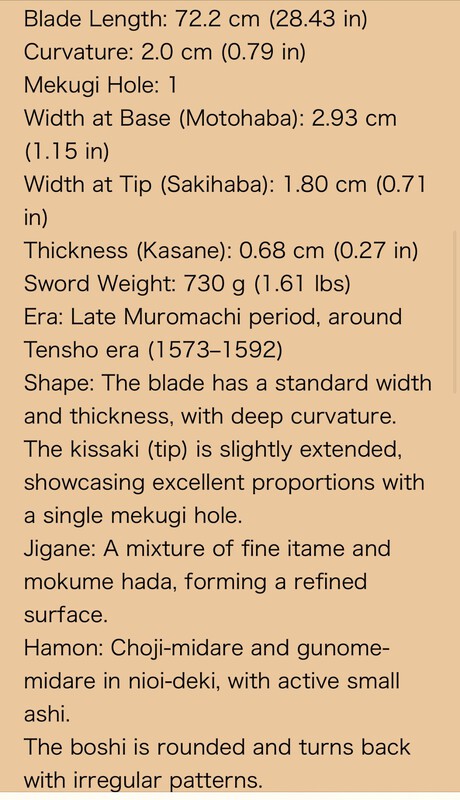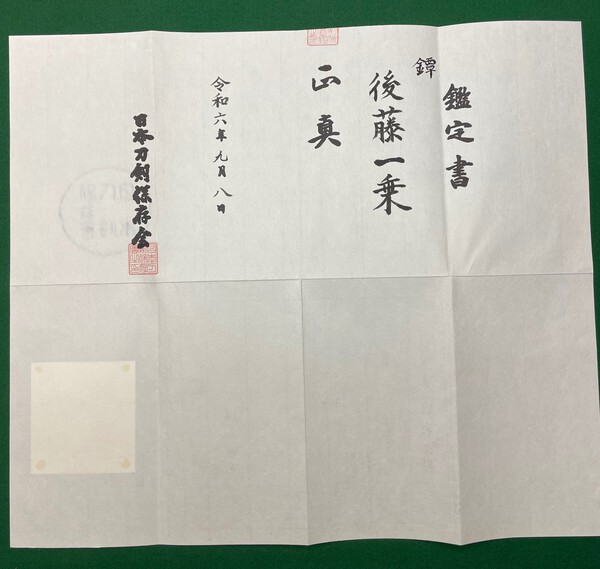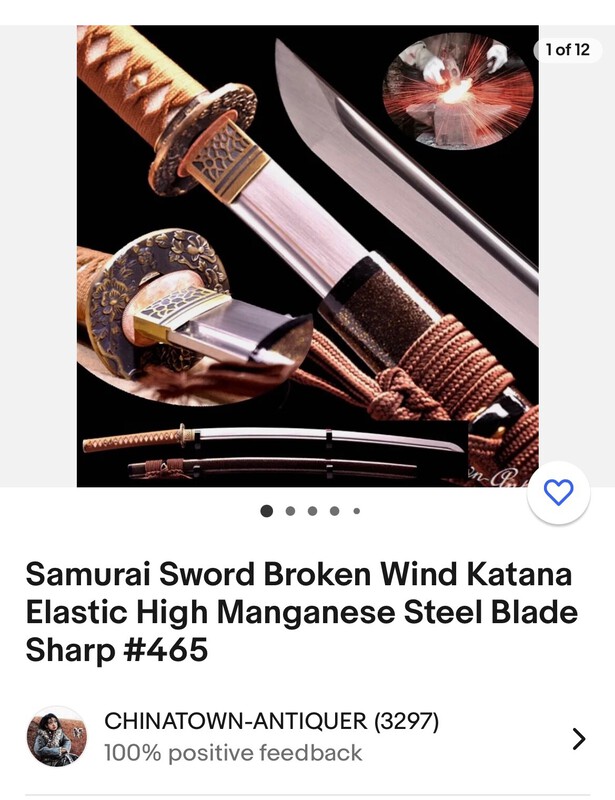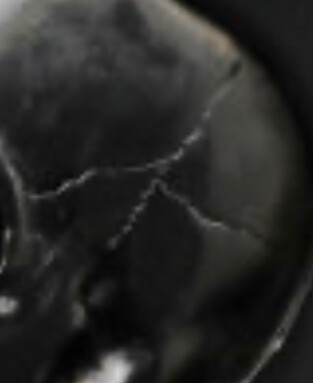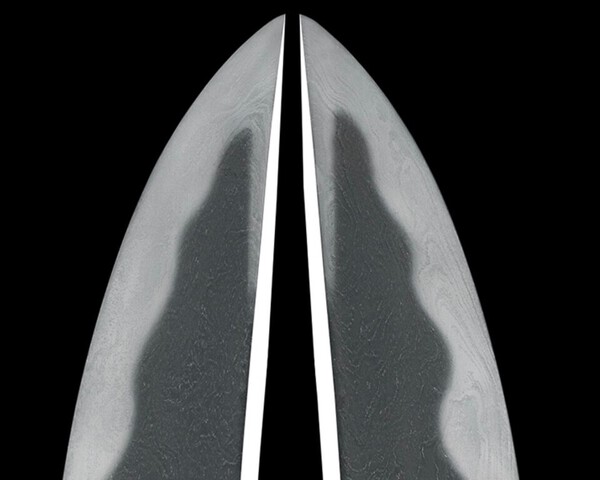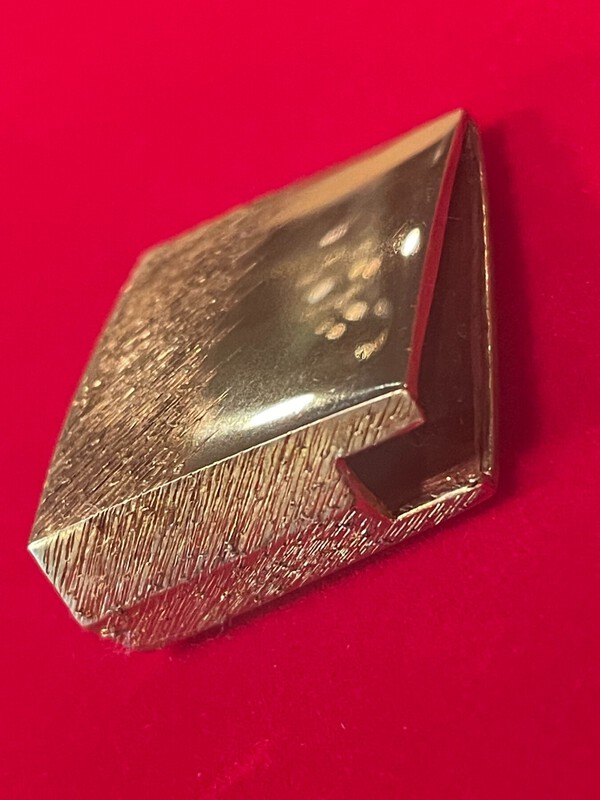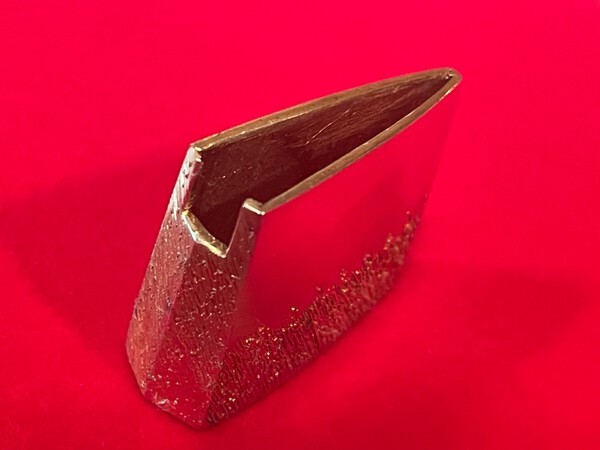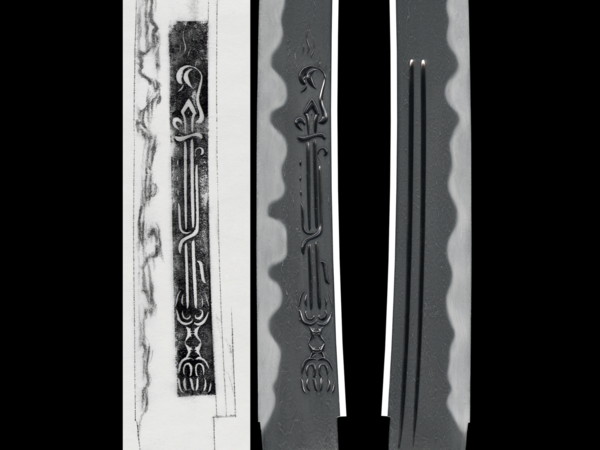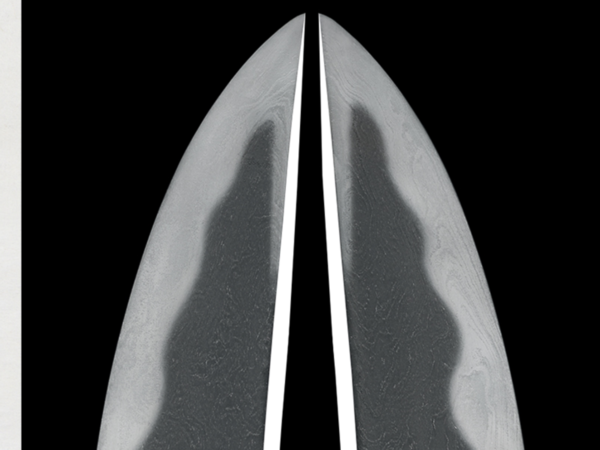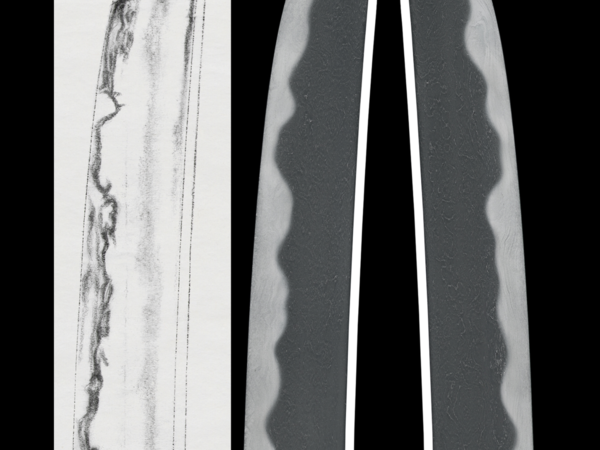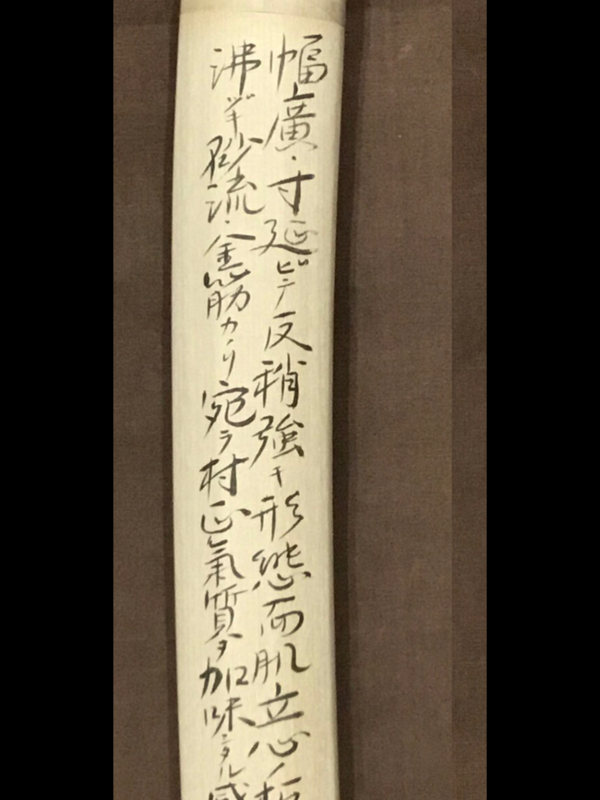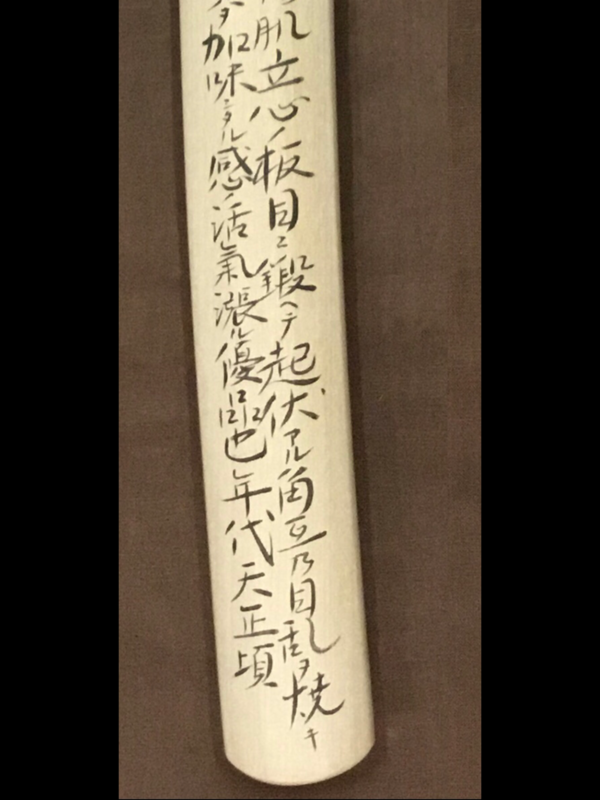
RichardP
Gold Tier-
Posts
223 -
Joined
-
Last visited
-
Days Won
2
Content Type
Profiles
Forums
Events
Store
Downloads
Gallery
Everything posted by RichardP
-
Thanks for the insight, Kirill. I’ve written back to aoi, politely asking if they believe this is the smith indicated. Will share the answer if I receive one.
-
Thanks— yeah, I just assumed it was going to come back Bungo Takada. I’m not finding “Dōsao Morihiro”anywhere, and aoi seems to be stating that’s the actual attribution. Markus Sesko’s Swordsmiths of Japan has a few more details about the Tensho-era Hoki Morihiro, “…real name Shichirō’emon, he also signed with the honorary titles Uemon no Jō and Saemon no Jō, a theory says that this was the early signature of Shichirōzaemon Hiroyoshi, chūjō-saku.” This is the only pairing I can find of “Morihiro” and “Hiroyoshi.”
-
Sorry, meant to include pics of the sword:
-
Hello All— I purchased a mumei katana from aoi some months ago. It had kicho papers to Takada Munekage, and so I asked to have the sword submitted to shinsa for modern papers before it left Japan. It passed, and aoi just sent me this description: This sword has been certified as Hozon under the name 'Dōsao Morihiro.' Dōsao Morihiro is the earlier name (mae-mei) of Hakushū Hiroga. I understand the alternate name of Hakushu Hiroga to be Hiko Hiroyoshi, and found these possibilities: https://nihontoclub.com/view/smiths/meisearch?order=field_smith_start_era_value&sort=asc&type=All&mei_op=contains&mei=廣賀 None of the Hiroyoshi smiths listed above provide an alternate name of Dosao Morihiro, however. I did find one Morihiro connected with Hiko, but there is no suggestion that he later went on to take a new Hiroyoshi name. If anyone could give me some guidance I’d be very appreciative. Thanks All!
-
Darcy post re Juyo criteria
RichardP replied to RichardP's topic in General Nihonto Related Discussion
Thank you Sam! -
Hello All— I’ve been trying, unsuccessfully, to locate an old post of Darcy’s where he discussed Juyo standards. I **think** I remember a post where Darcy stated that in addition to the competitive aspect where candidates in any particular Juyo session are judged against each other, each candidate is also judged against the entire known body of that smith’s work. In other words, it’s not enough for this Kiyomaro to shine against all the other shinshinto swords submitted this session if it’s to be awarded Juyo, it also needs to objectively rank among the top X% of the body of all known Kiyomaro swords… Am I remembering this correctly? If so, could someone kindly point me to that post? Thank you!!
-
-
I think Pietro’s entry is the one to beat:
-
Hi Dan! I first submitted it, unsuccessfully, to NBTHK. A friend recently submitted his own items to NTHK during a trip to Japan and kindly offered to take my tsuba with him, if I was willing to risk the shinsa fee. So it seems to be a split opinion between the two organizations. It’s my understanding that NBTHK’s judgments carry more weight—but still, what a thrill!
-
Surprise addendum: On a lark, I sent the tsuba back to Japan for a second opinion from NTHK. Just heard that they’ve papered it!
-
Ford Hallam Has Passed Away
RichardP replied to zanilu's topic in General Nihonto Related Discussion
So generous with his time, such a consummate gentleman. RIP -
Fascinating discussion. Does mei removal also occur with non-sword objects that receive papers, like tosogu? Having a signature / kao back-filled or chiseled off a seppa-dai in pursuit of papers seems unthinkable, but does it occur in these fields as well?
-
My internet search for “broken nihonto” just revealed an overlooked meibutsu. Named “Broken Wind” (presumably for its deadly ability to clear everyone out of the room), this venerable sword is currently in possession of the Chinatown Antiquer.
-
-
-
-
1) Sugata Wide and Long 2) Kitae Hada ____ Itame ____ Forged? Jigane? 3) Hamon ________ Gunome Midare ____ Yaki(ire?) 4) Hataraki Nie? Sunagashi ___ Kinsuji___ 5) Impression ___ Muramasa ______________________ (“A lively and excellent product with a sense of Muramasa’s temperament” — Google Tanslate)
-
Thank you so much, Jan and Moriyama-san!
-
-
-

